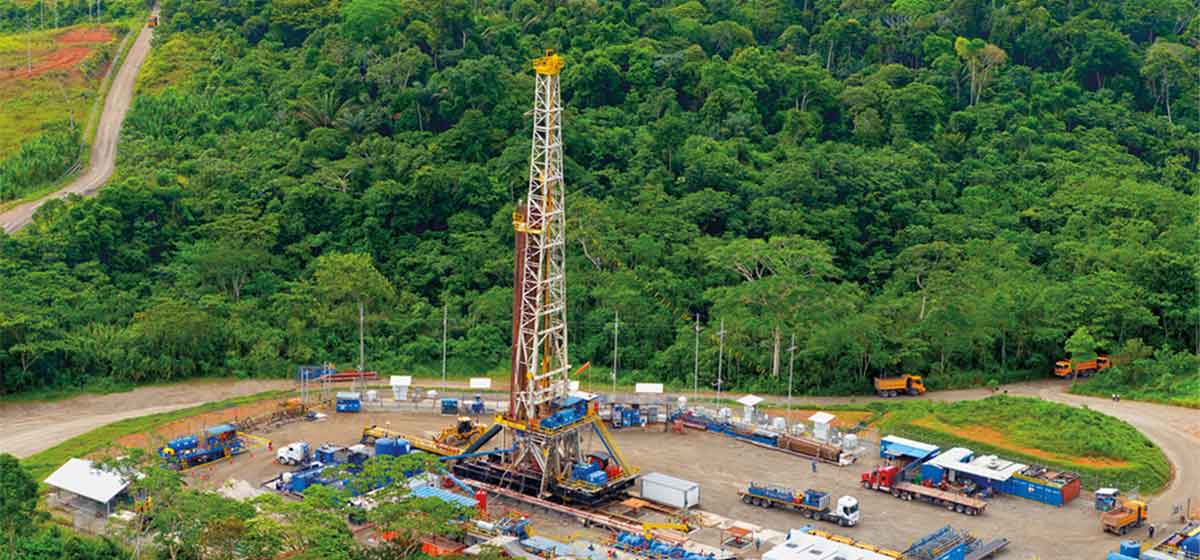Video In-Service Considerations for FE-Compliant Valves
Key guidance for ensuring the ongoing fugitive emissions–qualified performance of facility valve populations.
Trust our API- and ISO-certified Low-E valves to mitigate fugitive emissions in your operations

ISO- and API-certified Low-E valves can achieve up to 96% reduction in fugitive emissions

Selecting the right valve technologies and maintaining them properly is the best way to minimize or prevent fugitive emissions. Targeting these emissions presents a low-risk, high-yield opportunity to reduce your environmental impact. SLB valve technology and OEM maintenance services and support deliver long-term value and help you maintain your social license to operate.
Whether you have an existing installation or are working on a new project, our experts can walk you through available valve types and testing, certification, and maintenance options so that you can install what you need and keep it operational for years to come.
Our Low-E valve portfolio includes traditional, well-known ball valve types—trunnion-mounted, floating, and rising stem ball valves—together with new technology, such as integrated-seat ball valves and gate, globe, butterfly, and plug valves. These valves are certified to industry fugitive emissions design standards API 624 and 621 and ISO 15848-1.

Low-emission valves are part of our Transition Technologies portfolio and address the challenge of fugitive methane emissions. These technologies reduce environmental impact, helping you reach your sustainability goals by mitigating or preventing unintended emissions.
LEARN MORE† Source: R B Jackson et al. 2020. Increasing anthropogenic methane emissions arise equally from agricultural and fossil fuel sources. Environ. Res. Lett.15 071002. https://iopscience.iop.org/article/10.1088/1748-9326/ab9ed2.
20-y GWP (Global Warming Potential) for methane.

You can Count on Cameron for the oil and gas industry’s most comprehensive portfolio of fugitive emissions–qualified valves. Once you’ve put a certified low-emissions valve in service, here’s how to maximize its performance and minimize environmental impact.
THREE STEPS TO SUPPORT CERTIFIED VALVE PERFORMANCECode of Federal Regulations (CFR), Title 40, Part 61 (40 CFR Part 61): National Emission Standards for Hazardous Air Pollutants.
40 CFR Part 63: National Emission Standards for Hazardous Air Pollutants for Source Categories.
API Standard 622: Fugitive emissions testing of process valve packing in a test fixture subject to pressure, temperature, and mechanical cycles.
API Standard 624: Type Testing of Rising Stem Valves Equipped with Graphite Packing for Fugitive Emissions.
API Standard 641: Type Testing of Quarter-Turn Valves for Fugitive Emissions. Ball, butterfly, and plug valves with API Standard 622-compliant packing if graphite is used or various elastomer options at a range of temperatures.
ISO 15848-1: Industrial Valves—Measurement, Test and Qualification Procedures for Fugitive Emission.
With multiple international standards and differing parameters, care must be taken to ensure that qualifications meet expectations of the operator and regulatory bodies, taking into account test media and temperatures in addition to sizes and pressure ratings.
A qualification test performed with helium, for example, may not provide results that are relatable to verification methods used in the field, such as EPA Method 21. This is not to say that qualifications performed with helium would not be acceptable; it is, however, advisable to ensure that it is acceptable to all parties.
High-pressure and larger-diameter valves also introduce potential issues. Quarter-turn valves larger than 24 in and greater than ASME B16.34 Class 1500, for which API Standard 641 would ordinarily apply, are outside of the scope of the standard. This opens the question of how large, high-pressure valves should be qualified when they must meet regulatory requirements.
Currently there are no standards specific to wellhead valves.
These points highlight the need to fully understand the various criteria and implications when seeking to source emissions-compliant valve products.
Standards will also evolve in time, so due diligence will be required to ensure that products meet the intent of future revisions and requirements.
Qualification standards for fugitive emission-compliant valves are complex. Aside from size, pressure rating, and valve style, some other aspects affect continued compliance. Seal material design, sealing stress, shape, and construction are some of those aspects, along with surface finish and tolerance classes.
A product that does not maintain these aspects would no longer be considered covered by its original fugitive emissions (FE) certification. It is, therefore, vital that repair and redressing take account of these parameters to ensure that a refurbished or repaired product continues to be covered by its original FE compliance certification.
Count on us as your trusted partner and OEM for repairs on the Cameron and SLB family of fugitive emission-certified valves.
Cameron has invested seven years in the design, engineering, manufacturing, and testing of a comprehensive valve portfolio that meets or exceeds fugitive emissions standards. We continue to take a leadership role in researching and developing industry qualification standards for these emissions.
Although few operators in the upstream and midstream sectors demand or specify low-emission valves today, we are already manufacturing and delivering valves that meet the challenging design standards for oil and gas production, processing, transmission, and storage applications. And we encourage proper OEM maintenance and repair to ensure that the valves continue to perform reliably over the long term.
